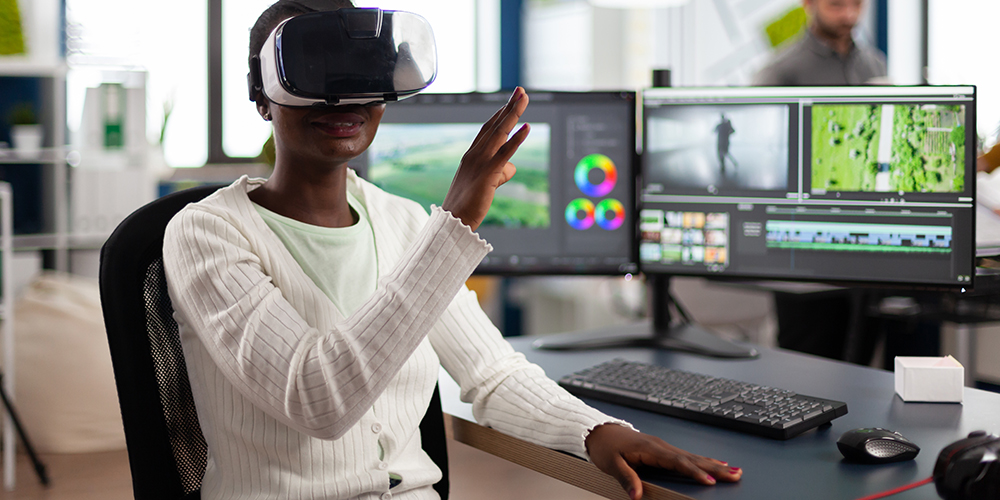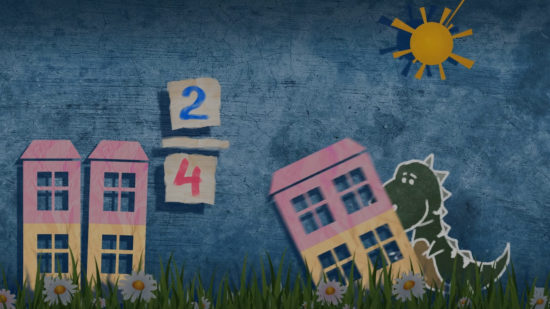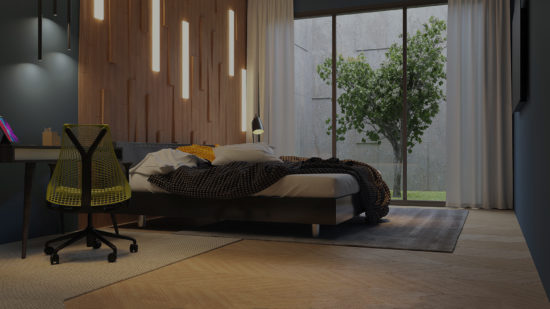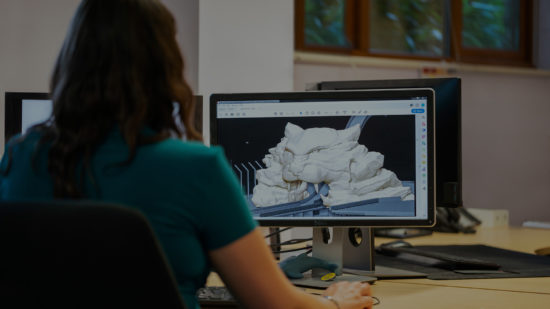To start with, let’s admit that animation and virtual reality can’t live without each other because the primary purpose of digital environments consists in mimicking actual life. So, what truth is hidden behind these words? Simply put, VR headset users enjoy spending time in virtual worlds only when they share the fundamental feature of earthly physics — vivacity.
True-to-life virtual environments are considered natural exclusively when local objects and beings behave according to expected biological patterns. 3D animation in VR is exactly what makes related apps attractive to users. Hence, each respected animation outsource company thoroughly seeks 3D modelers and animators to ensure the natural behavior of digital creatures inhabiting VR worlds.
In this article, we’ll explain what VR animation is, how it works, and in what way professionals approach the creation of lifelike movesets. Prepare yourself for an enthralling journey!
What Is VR Animation? — Definitions & Meanings
Nowadays, the animation of virtual reality objects is becoming an integral part of any VR app development pipeline. One just can’t make a naturally looking virtual world without animated humans, animals, or other creatures. What is VR animation from a technical perspective? Professional animators utilize software like Quill 2.0, Daydream Lab by Google, Blender, and even game engines like Unity or Unreal to model, rig, skin, texture, and animate 3D assets.
Fundamentally, three-dimensional models integrated into virtual environments are the same as those used in games or apps displayed on a 2D screen. The only difference here implies a perspective and use case. In VR, users witness, watch, and interact with the digital environment having a more immersive experience compared to traditional on-screen engagement. Still, in terms of production, the animation process rarely differs.
However, as always, there can be exceptions. For example, software like the aforementioned Quill 2.0 allows developers to create animation in VR, which, in turn, makes the process itself more immersive, entertaining, and creative. Moreover, such an approach promotes interest and stimulates attention during the development process, resulting in more motivated team members as well as reduced odds of employee burnout.
Types of VR Animations to Consider in Your Workflow
Today 3D animation studios make use of various VR animation types, including them in their workflows. So, how to create virtual reality content and animate it all? Let’s talk about this aspect in more detail so you could use each approach in your practice.
Computer-generated imagery (CGI) animation
Although everything taking place inside a virtual environment is generated by the computing powers of your hardware, this type of animation is called this way because it perfectly explains what’s happening beneath the hood. CGI 3D animation in VR is used for enlivening video games, feature films, short cartoons, training simulators, etc. Inside software like Cinema 4D or Autodesk Maya, an animator takes a digital puppet referred to as a character rig, defines the wanted pose or position, and takes advantage of motion paths called splines to animate the model with the help of keyframes. You may also notice that this animation type is often called just 3D animation.
Motion capture animation
Shortened as mocap, this technique is the most expensive as opposed to CGI since developers need to get real humans involved in the acting process. With specific suits on, real people act as if it were a movie, while specific hardware records each movement. When all the scenes or character movesets are recorded, animators process the obtained data to transform it all into smoothly animated video game characters.
Immersive virtual reality animation
As mentioned above, animators address software like Quill 2.0 to create character movements directly inside a virtual environment. Interestingly, this approach allows animators to express more creativity by visualizing how a potential player can interact with this or that object, NPC, as well as other people connected to the same server, metaverse, etc.
Virtual Reality Animation Use Cases
Today the industry knows numerous use cases of virtual reality 3D animation. Some studios work on VR ads or featured cartoons, whereas others play around with apps as well as video games. You can use virtual reality animation for any of these or other purposes. Depending on the product, budget, and project scope, you can choose mocap, 3D, or VR animation techniques.
In addition, it’s always better to define whether you’d like in-house employees to elaborate on animation, augment your team to do it more effectively, or outsource the whole process to an external professional studio. Well, here’s a guide to animation outsourcing, it might help. Whether you are more into extending your in-house team or want to outsource the whole work, pay attention to how experienced artists animate characters for different media.
Animation in VR Videos

Animation in VR movies, ads, or other products related to video streaming is a cornerstone underlying everything that occurs on-screen. 360-degree VR films are becoming incredibly popular as more headsets supporting virtual reality technology appear in the market. Sometimes animating a full-size and elaborate VR cartoon takes even more time than the same process in game development because each movement must be unique.
As the name itself suggests, animated 360 VR movies allow viewers to get a more immersive experience because they can feel as if directly participating in every scene. Just look at Invasion! or Crow: The Legend. Even though these 360 VR cartoons look like they are meant for children, such products can entertain even adults, considering what technologies have been employed to achieve such a stunning result.
Animation in VR Games
In game development, VR definitely occupies a particular niche. Despite multiple animation trends, motion capture and CGI are the most widely used techniques for making characters move in digital worlds. In the first case, as we’ve already described, game development studios invite real human actors to record their movements and translate the gathered data into previously created 3D models. When it comes to CGI, all the process is manual.
Before jumping right to the animation phase, 3D artists create a mesh, giving it the desired shape, adjust its topology, unwrap it, then texture the character, rig, skin, and only afterward animate everything. Using software like Blender or Autodesk Maya, animators establish poses as well as keyframes to make the 3D model move like an actual being. As for animating in VR, this workflow isn’t popular enough yet, though it provides multiple benefits.
Animation in VR Apps
Just like animating objects and characters in VR game development, animators utilize a bunch of professional software to invigorate digital realms when it comes to making VR apps. Facebook’s Quill, Google’s Tilt Brush, Gravity Sketch, Blender, Unity, Unreal Engine, etc. — whatever tool you pick, be aware of its limitations. Whereas the same Quill enables you to both illustrate and animate VR worlds, Tilt Brush is only meant for illustration.
Depending on your chosen path, you’ll need a different team comprising a broad spectrum of experts in their area. For example, going with mocap animation, you’ll have to hire real actors and spend extra money on suits, let alone use tons of hardware. In turn, if you opt for 3D animation, get ready to employ 3D modelers, riggers, texturers, animators, motion designers, etc. This way or another, sometimes it’s better to rely on outsourcing studios.
How to Make a VR Animation that Blows the Mind?
Once you’ve chosen your preferred tech stack, hired or extended a reliable team, and defined the path, it’s time to discuss the workflow. Here let’s outline the most likely scenarios when you go with CGI animation, inasmuch as this is the golden mean that ensures cost-efficiency and mind-blowing results.
1. Preliminary preparations
Once you’ve got a sculpted, textured (not always), rigged, and skinned 3D model on your desk, it’s high time you’ve chosen the right tech stack for your animation pipeline. Start with considering what tools you are most comfortable with and which are the most versatile so that you can use them not only for animation purposes. Try out Autodesk Maya, 3ds Max, Blender, Cinema 4D, or Houdini Apprentice as the most widely utilized. Install everything you may require and proceed to the next step.
2. Pre-production
Work with 3D concept art and research the industry based on what you need. For instance, if you need to animate a dog, watch dozens of videos displaying how these animals walk, bark, wave their tails, and so on. In addition, work with storyboards, scripts, and designs by cooperating with other team members.
3. Production
After deciding on the animation style, keyframes, and scenes where your character will move around, pay careful attention to how its virtual skeleton is built. If it’s a VR game, inquire about a possible FPS rate to gain more insight into how you should plan the workflow. Then establish keyframes, keeping in mind everything you’ve learned throughout the previous two phases.
4. Post-production
After tweaking keyframes and finishing the animation, it’s time to move on to polishing. In particular, this stage may presuppose removing some keyframes or adding them whenever necessary, already having a complete understanding as well as vision of the whole animation and scene where it occurs.
Is There a Bright Future Awaiting VR Animation?
Without a doubt, VR animation is a future brought about on the wings of metaverses. As long as XR technologies advance, pushing the limits for industries, studios will be busy animating humans, animals, creatures, or objects for digital worlds. The more the demand for VR apps, games, and metaverses, the better technologies upholding virtual reality animation become. Plus, the more VR studios and firms relying on such products emerge.
According to Statista, the VR industry is one of the most rapidly growing, with a market size predicted to develop from $5bn in 2021 to $12bn by 2024. Therefore, there’s no denying that more and more VR apps along with games will emerge in the years to come. Even the tools that facilitate the development process are evolving at an incredible pace. A few years ago, no one could imagine animators and designers using VR to create, not entertain themselves.
3D-Ace as a Gateway to Your VR Product
With insights shown in this article, you can do real magic inside and outside virtual environments as you elaborate on your next VR project. Besides, looking for a capable VR animation studio to partner with and bring the day of release even closer, pay attention to 3D-Ace as an experienced player in the industry. We know by heart how to produce quality VR content and enliven it all using high-end technologies.
Where to start from, you may ask? Just contact us, and we’ll provide you with all the answers related to your upcoming VR product, be it a game or app.










